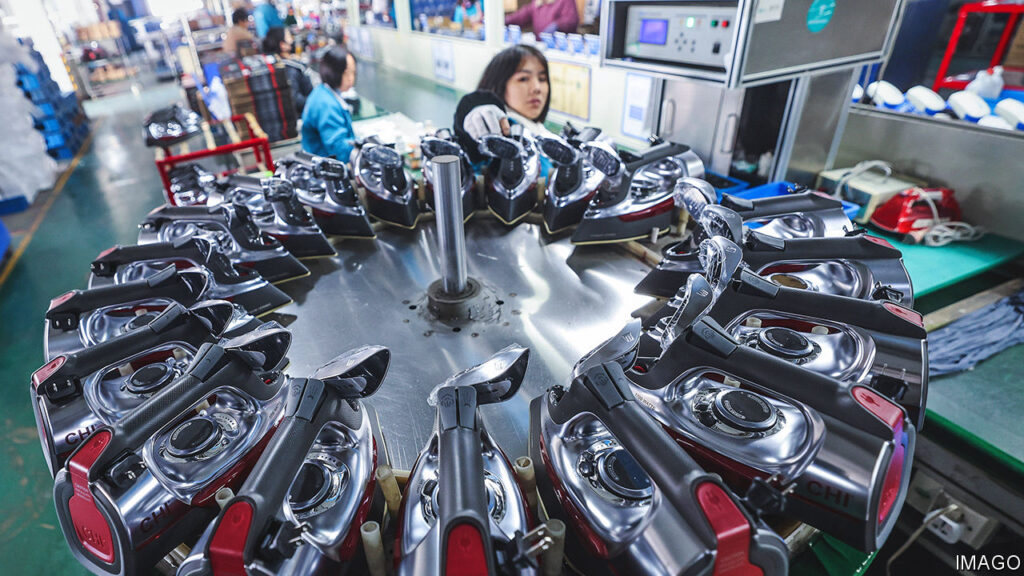If American economy starts to deteriorate, the people of Ningbo will be among the first to know. The eastern Chinese port, home to 9.6 million inhabitants, contains a vast industrial area. The goods are prepared for export and shipped abroad via a deep-water port, one of the busiest in the world. The coast of Zhejiang province is dotted with similar entrepôts, where thousands of mostly family-owned businesses have built a diverse production base over the past forty years. They make everything from textiles and car parts to electronics and machine parts.
Ningbo is also a city of political importance. Although private industry, rather than state-backed enterprises, has flourished in the region, it is nevertheless presented as a model of “common prosperity”: Xi Jinping’s way of dealing with wealth inequality. And amid a bleak overall outlook, with much of the country mired in a real estate crisis and suffering from weak consumer demand, surprisingly strong exports and waning fears of a recession in America have made Ningbo one of the most optimistic cities of China.
Official data released on March 7 shows that Chinese exports rose 7.1% year-on-year in the first two months of 2024. This is especially impressive considering that some analysts had expected growth of less than 1%. Even exports to America rose 5% year on year, after falling almost 7% in December. The figures were so encouraging that policymakers at the annual Chinese Congress in Beijing made public a version of it a day before the expected publication date.
It is therefore no surprise that the atmosphere in Ningbo is more cheerful than in other Chinese cities. Some of this, according to locals, can be attributed to the relatively easy Covid-19 years. In 2022, many major Chinese cities went into lockdown for months. Ningbo, perhaps by luck, avoided a complete lockdown and closed some factories. When Shanghai closed in April and May that year, halting trucks heading to the port, some traffic was diverted to the busy port of Ningbo.
However, good cheer has its limits, suggesting that cities like Ningbo may not be the driving force behind China’s recovery. A drop in foreign demand would be devastating for the region. Local factories got a taste of this when China reopened in early 2023. Empty containers began piling up at Ningbo port, indicating no purchases abroad. An official who visited the city last March said he expected disaster for the city and other export centers. Fortunately, part of the phenomenon was explained by surplus shipping containers returning to China for the first time since the pandemic began. The drop in demand was a piece of cake.
Ningbone factory bosses have other concerns. The family-controlled nature of their businesses makes bank financing more difficult to obtain. While larger manufacturers in southern cities such as Shenzhen enjoy government support for technology upgrades – involving robotics and the Internet of Things – local companies are finding it difficult to keep pace.
And while the latest export data exceeded expectations across the board, things improved from a very low base. Analysts at HSBC, a bank, expects trade uncertainty to persist. Meanwhile, demand is shifting: that from poorer markets, such as Africa and South America, is increasing, according to the most recent data; that from America remains strong; but that from Australia, the EU and Japan falls.
How well will Ningbo adapt? Many manufacturers have started supplying foreign brands. More recently, they have begun selling directly to customers in the rich world through Amazon, an online marketplace, and Temu and Shein, two Chinese e-commerce sites, notes Hing Kai Chan of the University of Nottingham Ningbo China. It is unlikely that they have developed similar channels in the markets that are now growing strongly. If demand from the rich world fades, Ningbo’s happy days may come to an end. Instead of developing a new path to prosperity, China’s optimistic city is falling into the shoes of the country’s geopolitical rivals. ■
For more expert analysis on the biggest stories in economics, finance and markets, sign up for Money Talks, our weekly subscriber-only newsletter.


